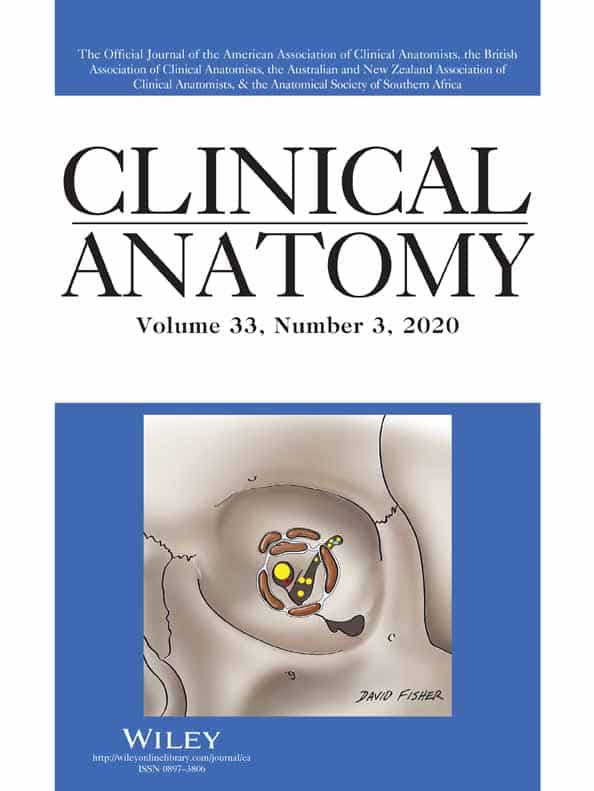
Anatomical and Ultrasonography-Based Investigation to Localize the Arteries on the Central Forehead Region During the Glabellar Augmentation Procedure (2020)
Title : Anatomical and Ultrasonography-Based Investigation to Localize the Arteries on the Central Forehead Region During the Glabellar Augmentation Procedure
Researcher : Phumyoo, T., Jiirasutat, N., Jitaree, B., Rungsawang, C., Uruwan, S., Tansatit, T.
Abstract : Glabellar augmentation is one of the most popular cosmetic procedures but can entail severe complications caused by inadvertent intravascular injection of filler. Nevertheless, few studies have investigated the arteries on the glabellar and central forehead regions. The aim of this study was to correlate the topography and location of the arteries in this area with anatomical landmarks to propose a safety guideline. Two methods were used to investigate the glabellar and central forehead areas: dissection of 19 Thai embalmed cadavers, and ultrasonographic examination of 14 healthy Thai volunteers. At the level of the glabellar point, the horizontal distances from the midline to the arteries were 4.7 mm (central artery), 7.8 mm (paracentral artery), and 14.7 and 19.2 mm (superficial and deep branches of supratrochlear artery). The depths from the skin of the arteries were 3.1 mm (central artery), 4.8 mm (paracentral artery), and 4.2 and 5.9 mm (superficial and deep branches of supratrochlear artery). The periosteal artery was detected in 71.1% as a branch of either the superior orbitoglabellar or the supratrochlear artery. It ran in the supraperiosteal layer for a short course and penetrated the periosteum above the superciliary ridge or above the medial eyebrow, adhering tightly to the bony surface. This study suggests a safe injection technique for the glabella based on a thorough knowledge of arterial distribution and topography and color Doppler ultrasonographic examination prior to the injection, which is recommended to minimize the risk of severe complications. Clin. Anat. 33:370–382, 2020. © 2019 Wiley Periodicals, Inc.
Link to Academic article: https://doi.org/10.1002/ca.23516
Journal : Clinical Anatomy, 2020, 33(3).
Bibliography : Phumyoo, T., Jiirasutat, N., Jitaree, B., Rungsawang, C., Uruwan, S., & Tansatit, T.(2020). Anatomical and Ultrasonography-Based Investigation to Localize the Arteries on the Central Forehead Region During the Glabellar Augmentation Procedure. Clinical Anatomy, 33(3), 370–382.
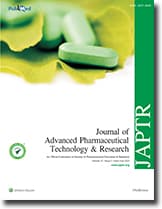
Anti-aging potential and phytochemicals of Centella asiatica, Nelumbo nucifera, and Hibiscus sabdariffa extracts (2020)
Title : Anti-aging potential and phytochemicals of Centella asiatica, Nelumbo nucifera, and Hibiscus sabdariffa extracts
Researcher : Monsicha Khuanekkaphan1, Chanai Noysang2, Warachate Khobjai3
Department : 1 Department of Health and Aesthetics, Thai Traditional Medicine College, Rajamangala University of Technology Thanyaburi, Pathum Thani, Thailand
2 Department of Innovation of Health Products, Thai Traditional Medicine College, Rajamangala University of Technology Thanyaburi, Pathum Thani, Thailand
3 Department of Applied Thai Traditional Medicine, Thai Traditional Medicine College, Rajamangala University of Technology Thanyaburi, Pathum Thani, Thailand
Abstract : Centella asiatica, Nelumbo nucifera Gaertn, and Hibiscus sabdariffa have been used as medicinal plants in Thailand. They are sources of phytochemicals that applications for esthetic and healthcare. The aim of this research was to examine the phytochemical constituents and anti-aging potential of these plants. The phytochemical compounds were performed using gas chromatography-mass spectrometry. The anti-aging activities were evaluated by 2,2-diphenyl-1-picrylhydrazyl (DPPH), 2,2′-azinobis (3-ethylbenzothiazoline-6-sunfonic acid) (ABTS), anti-collagenase, and anti-elastase assays. The main interest phytochemical compounds of ethanolic extracts of C. asiatica, N. nucifera, H. sabdariffa were ethanol, 2-(-Octadecenyloxy), γ-sitosterol and hexadecanoic acid, and ethyl ester, respectively. The DPPH half-maximal inhibitory concentration (IC50) results of C. asiatica, N. nucifera, and H. sabdariffa were 0.32 ± 0.01, 0.34 ± 0.00, and 0.35 ± 0.01 mg/mL, respectively. The ABTS result of H. sabdariffa extract showed high inhibitory activity at IC50of the extract was 0.62 ± 0.12 mg/mL. The percentage of collagenase inhibition of C. asiatica, N. nucifera, and H. sabdariffa at 1.0 mg/mL was 78.13 ± 4.42, 85.94 ± 2.21, and 90.63 ± 0.00, respectively. The C. asiatica extract had a high percentage of elastase inhibition. Consequently, these research results suggest that phytochemicals may also provide a range of esthetic and health benefits. The phytochemical constituent could be used as anti-aging active ingredient for cosmetic and pharmaceutical industrials.
Keywords: Anti-aging, Centella asiatica, Hibiscus sabdariffa, Nelumbo nucifera, phytochemical
Link to Academic article: DOI: 10.4103/japtr.JAPTR_79_20
Journal : Journal of Advanced Pharmaceutical Technology and Researchthis link is disabled, 2020, 11(4).
Bibliography : Khuanekkaphan, M., Noysang, C., & Khobjai W. (2020). Anti-aging potential and phytochemicals of Centella asiatica, Nelumbo nucifera, and Hibiscus sabdariffa extracts. J Adv Pharm Technol Res, 11(4), 174-178. Retrieved from https://www.japtr.org/text.asp?2020/11/4/174/297699

Association of HLA genotypes with phenytoin induced severe cutaneous adverse drug reactions in Thai children (2020)
Title : Association of HLA genotypes with phenytoin induced severe cutaneous adverse drug reactions in Thai children
Researcher : Clin.Prof.Suwat Benjaponpitak
Department : Faculty of Medicine, Siam University, Bangkok, Thailand
E-mail : med@siam.edu
Abstract : Purpose: Phenytoin (PHT) is a common causative drug for severe cutaneous adverse drug reactions (SCARs) in children. SCARs, including drug reaction with eosinophilia and systemic symptoms (DRESS), Stevens-Johnson syndrome (SJS) and toxic epidermal necrolysis (TEN), are associated with a variation in HLA genotypes. Blood screening for specific HLA allele before PHT prescription would help in the reduction of the incidence of PHT induced SCARs. This study was to investigate the association between variations of HLA genotypes and PHT induced SCARs in Thai children.
Methods: Cases were Thai children aged between 0-18 years diagnosed with SCARs from PHT. Control groups were Thai children of corresponding age who had taken PHT for a least 12 weeks without any hypersensitivity reaction and healthy population controls. Blood samples from both groups were collected for HLA genotyping using a reverse-sequence specific oligonucleotide (SSO) probes method. Carrier rates of HLA alleles were compared between 22 cases (17 DRESS and 5 SJS-TEN), 60 tolerant controls and 649 population controls.
Results: Two HLA alleles includingHLA-B*51:01 and HLA-C*14:02 were significantly associated with PHT induced DRESS (OR 5.83; 95 % CI 1.36-25.00, p = 0.022 and OR 5.85; 95 % CI 1.16-29.35, p = 0.039). HLA-B*38:02 was significantly associated with PHT induced SJS-TEN (OR12.67; 95 % CI 1.50-106.89, p = 0.044). Haplotype analysis demonstrated the association of HLA haplotype A*11:01-B*51:01-C*14:02 and PHT induced DRESS compared to tolerant controls and the healthy population control group (OR 8.92; 95 % CI 1.47-54.02, p = 0.019, and OR 10.2; 95 % CI 3.04-34.21, p = 0.002). HLA haplotype B*38:02-C*07:01 in PHT induced SJS-TEN was significantly higher than those in tolerant controls and the healthy population control group (40 % vs 3.3 % vs 0.3 %; OR 19.33; 95 % CI 1.98-188.59, p = 0.027 and OR 215.67; 95 % CI 22.40-2076.04, p = 0.0003. HLA-B*15:02 was not associated with PHT induced SCARs.
Significance: An association betweenHLA-B*51:01 and HLA-C*14:02 and PHT induced DRESS and HLA-B*38:02 and PHT induced SJS-TEN has been demonstrated in Thai children.
Keywords: Drug reaction; HLA-B*38:02; HLA-B*51:01; HLA-C*14:02; Phenytoin.
Link to article : Epilepsy Research, 2020, 162, 106321. DOI: 10.1016/j.eplepsyres.2020.106321
Journal : Epilepsy Research Volume 162, May 2020,
Bibliography : Manuyakorn, W., Likkasittipan, P., Wattanapokayakit, S., Suvichapanich, S., Inunchot, W., Wichukchinda, N., Khongkhatithuml, C., Thampratankul, L., Kamchaisatian, W., Benjaponpitak, S., & Mahasirimongkol, S. (2020, May). Association of HLA genotypes with phenytoin induced severe cutaneous adverse drug reactions in Thai children. Epilepsy Res, 162, 106321. doi: 10.1016/j.eplepsyres.2020.106321. Epub 2020 Mar 13. PMID: 32272329.

Changing the Landscape: An Introduction to the Agricultural and Food Chemistry Technical Program at the 258th American Chemical Society National Meeting in San Diego(2020)
Title : Changing the Landscape: An Introduction to the Agricultural and Food Chemistry Technical Program at the 258th American Chemical Society National Meeting in San Diego
Researcher : Michael Appell, Atanu Biswas, SeChin Chang, Wei Chen, H. N. Cheng, Jim Daily III, Xuetong Fan, Michael Granvogl, Mingming Guo, Yoshihiro Ito, Tony Jin, Masuko Kobori, Jane V. Leland, LinShu Liu, Yangchao Luo, Shaun MacMahon, Kanjana Mahattanatawee*, Sunghyun Nam, Coralia Osorio, Bosoon Park, Daxi Ren, Shengmin Sang, Fereidoon Shahidi, Michael Tunick, Chibuike C. Udenigwe, Qin Wang, Wallace H. Yokoyama, Liangli Lucy Yu, Yaqiong Zhang, and Yingdong Zhu
Department : *Food Technology Department, Faculty of Science, Siam University
E-mail : *kanjana@siam.edu
ฐานข้อมูลงานวิจัย มหาวิทยาลัยสยาม : –
Link to article: Journal of Agricultural and Food Chemistry, 2020, 68(46), pp. 12769–12772. https://doi.org/10.1021/acs.jafc.0c02809
Publication: Journal of Agricultural and Food Chemistry / in Scopus
Bibliography : Appell, M., Biswas, A., Chang, S., Chen, W.,Cheng, H. N., Daily III, J., Fan, X., Granvogl, M., Guo, M., Ito, Y.,Jin, T., Kobori, M., Leland, J. V., Liu, L., Luo, Y.,MacMahon, S., Mahattanatawee, K.,Nam, S., Osorio,C., …Zhu, Y. (2020). Journal of Agricultural and Food Chemistry, 68(46), 12769–12772. https://doi.org/10.1021/acs.jafc.0c02809
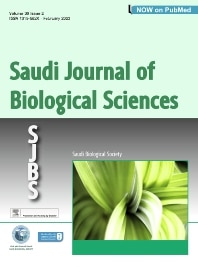
Chemical evaluation and antibacterial activity of novel bioactive compounds from endophytic fungi in Nelumbo nucifera (2020)
Title : Chemical evaluation and antibacterial activity of novel bioactive compounds from endophytic fungi in Nelumbo nucifera
Researcher : Techaoei, S., Jirayuthcharoenkul, C., Jarmkom, K., Dumrongphuttidecha, T., Khobjai, W.
Department :
Abstract : The objective of this study was to characterize an endophytic fungi producing-bioactive compound from the aquatic plant, Nelumbo nucifera. All parts of such plant were cleaned with surface sterilization technique and cultured on potato dextrose agar to isolate endophytic fungi. The identification was characterized by morphological and molecular technique. Fungal isolates were screened to discover antimicrobial activities by disc diffusion method against Methicillin-resistant Staphylococcus aureus DMST20651 (MRSA). MIC and MBC for those crude fungal extracts were determined. Finally, the chemical profile of crude extract was determined by gas chromatography and mass spectrometry. Six endophytic fungi were isolated from the surface-satirized parts of N. nucifera. Based on disc diffusion assay, the highest antibacterial activity against MRSA was isolate ST9.1 identified as Aspergillus cejpii. Results demonstrated that the ethyl acetate extraction had more active fractions with MIC of 2.5 mg/ml and MBC concentration of 50.0 mg/ml. The crude extracts were developed to identify the chemical constituents by gas chromatography and mass spectrometry. The major component of crude extract of endophytic fungi was 5-(1H-Indol-3-yl)-4,5-dihydro-[1,2,4]triazin-3-ylamine (C11H11N5). Thus, the plant could be used in the treatment of infectious diseases caused by bacterial pathogen.
Keywords: Antimicrobial activity, N. nucifera, Methicillin-resistant S. aureus, Endophytic fungi
Link to Academic article: https://doi.org/10.1016/j.sjbs.2020.08.037
Journal : Saudi Journal of Biological Sciencesthis, 2020, 27(11)
Bibliography : Techaoei, S., Jirayuthcharoenkul, C., Jarmkom, K., Dumrongphuttidecha, T., & Khobjai, W. (2020). Chemical evaluation and antibacterial activity of novel bioactive compounds from endophytic fungi in Nelumbo nucifera. Saudi Journal of Biological Sciencesthis, 27(11), 2883–2889. Retrieved from https://doi.org/10.1016/j.sjbs.2020.08.037
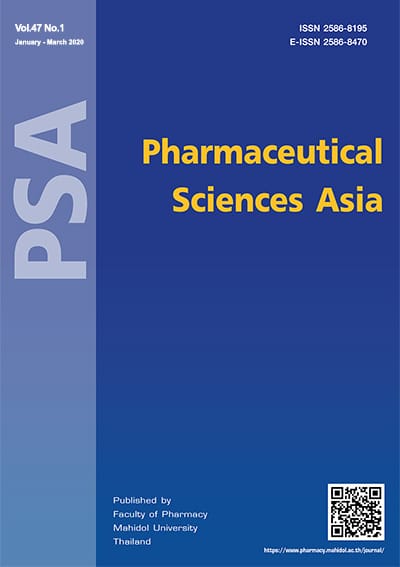
Comparative in vitro activity of sitafloxacin against multidrug-resistant and carbapenem-resistant acinetobacter baumannii clinical isolates in Thailand (2020)
Title : Comparative in vitro activity of sitafloxacin against multidrug-resistant and carbapenem-resistant acinetobacter baumannii clinical isolates in Thailand
Researcher : Taniya Paiboonvong1,Vipavee Rodjun2,Jantana Houngsaitong1,Mullika Chomnawang3,Preecha Montakantikul2,Suvatna Chulavatnatol2*
1 Department of Pharmacy, Faculty of Pharmacy, Mahidol University, Bangkok, Thailand
2 Faculty of Pharmacy, Siam University, Bangkok, Thailand
3 Department of Microbiology, Faculty of Pharmacy, Mahidol University, Bangkok, Thailand
ฐานข้อมูลงานวิจัย มหาวิทยาลัยสยาม : –
Link to article: Pharmaceutical Sciences Asia, 2020, 47(1), pp. 37–42 https://pharmacy.mahidol.ac.th/journal/journalabstractDetail.php?jvol=47&jpart=1&jconnum=4
Journal :Pharmaceutical Sciences Asia/ Scopus
Citation : Paiboonvong, T., Rodjun, V., Houngsaitong, J., Chomnawang, M., Montakantikul,P., & Chulavatnatol, S. (2020). Comparative in vitro activity of sitafloxacin against multidrug-resistant and carbapenem-resistant acinetobacter baumannii clinical isolates in Thailand. Pharmaceutical Sciences Asia, 47(1), 37–42. https://doi.org/10.29090/psa.2020.01.019.0012
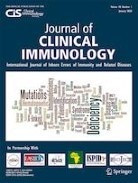
Compound Heterozygous PGM3 Mutations in a Thai Patient with a Specific Antibody Deficiency Requiring Monthly IVIG Infusions (2020)
Title : Compound Heterozygous PGM3 Mutations in a Thai Patient with a Specific Antibody Deficiency Requiring Monthly IVIG Infusions
Researcher : Clin.Prof.Suwat Benjaponpitak
Department : Faculty of Medicine, Siam University, Bangkok, Thailand
E-mail : med@siam.edu
Link to Academic article: DOI: 10.1007/s10875-019-00693-6
Journal : Journal of Clinical Immunology Vol. 40, No. 1, 2020
Bibliography : Ittiwut, C., Manuyakorn, W., Tongkobpetch, S., Benjaponpitak, S., Fisher, M. R., Milner, J. D., Lyons, J. J., Suphapeetiporn, K., & Shotelersuk, V. (2020, January). Compound Heterozygous PGM3 Mutations in a Thai Patient with a Specific Antibody Deficiency Requiring Monthly IVIG Infusions. J Clin Immunol, 40(1), 227-231. doi: 10.1007/s10875-019-00693-6. Epub 2019 Nov 9. PMID: 31707513.
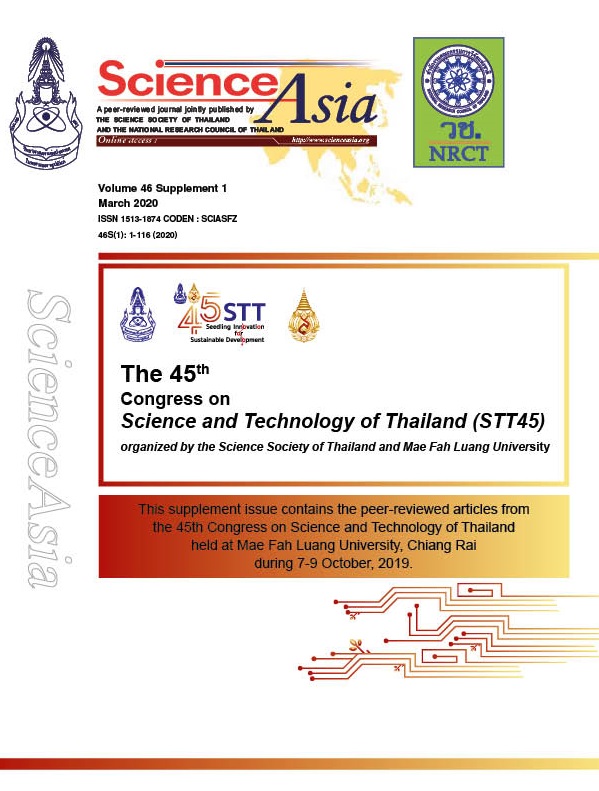
Conventional and microwave-assisted extraction for bioactive compounds from dried coffee cherry peel by-products and antioxidant activity of the aqueous extracts (2020)
Title : Conventional and microwave-assisted extraction for bioactive compounds from dried coffee cherry peel by-products and antioxidant activity of the aqueous extracts
Researcher : Thaiphanit, S., Wedprasert, W., Srabua, A.
Department : ภาควิชาเทคโนโลยีการอาหาร คณะวิทยาศาสตร์ มหาวิทยาลัยสยาม
E-mail : somruedee.tha@siam.edu
ฐานข้อมูลงานวิจัย มหาวิทยาลัยสยาม: https://e-research.siam.edu/kb/conventional-and-microwave-assisted-extraction-for-bioactive-compounds-from-dried-coffee-cherry-peel-by-products-and-antioxidant-activity-of-the-aqueous-extracts/
Link to article: ScienceAsia, 2020, 46 S(1), pp. 12–18. https://www.scienceasia.org/content/viewabstract_progress.php?ms=11118
Journal : ScienceAsia / in Scopus
Bibliography : Somruedee Thaiphanit, Warintorn Wedprasert and Aristha Srabua. (2020). Conventional and microwave-assisted extraction for bioactive compounds from dried coffee cherry peel by-products and antioxidant activity of the aqueous extracts. ScienceAsia, 46S(1), 12-18.

Effect of actinomycin D isolated from the cultured broth of marine streptomyces spp. On cell division protein FtsZ (2020)
Title : Effect of actinomycin D isolated from the cultured broth of marine streptomyces spp. On cell division protein FtsZ
Researcher : Phennapa Charoenwiwattanakij, Jaturong Pratuangdejkul, Sumet chongruchiroj, Khanit Suwanborirux, Chitti Thawai, Jiraporn Chingunpitak and Veena Satitpatipan
Link to article : Chiang Mai Journal of Science, 2020, 47(3), pp. 362–377. https://epg.science.cmu.ac.th/ejournal/journal-detail.php?id=10910
Journal : Chiang Mai Journal of Science / in Scopus
Citation : Charoenwiwattanakij, P., Pratuangdejkul, J., Chongruchiroj, S., Suwanborirux, K., Thawai, C., Chingunpitak, J., & Satitpatipan, V., (2020). Effect of actinomycin D isolated from the cultured broth of marine streptomyces spp. On cell division protein FtsZ. Chiang Mai Journal of Science, 47(3), 362–377.
ฐานข้อมูลงานวิจัย มหาวิทยาลัยสยาม : –
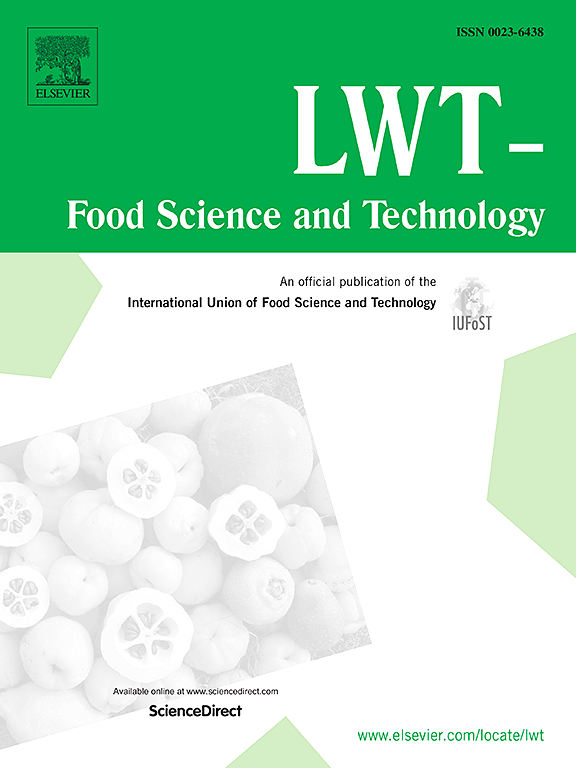
Fast dissolving, hermetically sealable, edible whey protein isolate-based films for instant food and/or dry ingredient pouches (2020)
Title : Fast dissolving, hermetically sealable, edible whey protein isolate-based films for instant food and/or dry ingredient pouches
Researcher : Theeranun Janjarasskul, Kanitha Tananuwonga, Thunyaluck Phupoksakula and Somruedee Thaiphanit
Department : ภาควิชาเทคโนโลยีการอาหาร คณะวิทยาศาสตร์ มหาวิทยาลัยสยาม
E-mail : somruedee.tha@siam.edu
ฐานข้อมูลงานวิจัย มหาวิทยาลัยสยาม: https://e-research.siam.edu/kb/fast-dissolving-hermetically-sealable/
Link to article: LWT-Food Science and Technology, Vol.134 (2020), page 110102. https://doi.org/10.1016/j.lwt.2020.110102
Journal : LWT / in Scopus
Bibliography : Janjarasskul, T., Tananuwong, K., Phupoksakul, T., & Thaiphanit, S. (2020). Fast dissolving, hermetically sealable, edible whey protein isolate-based films for instant food and/or dry ingredient pouches. LWT-Food Science and Technology, 134, 110102. https://doi.org/10.1016/j.lwt.2020.110102